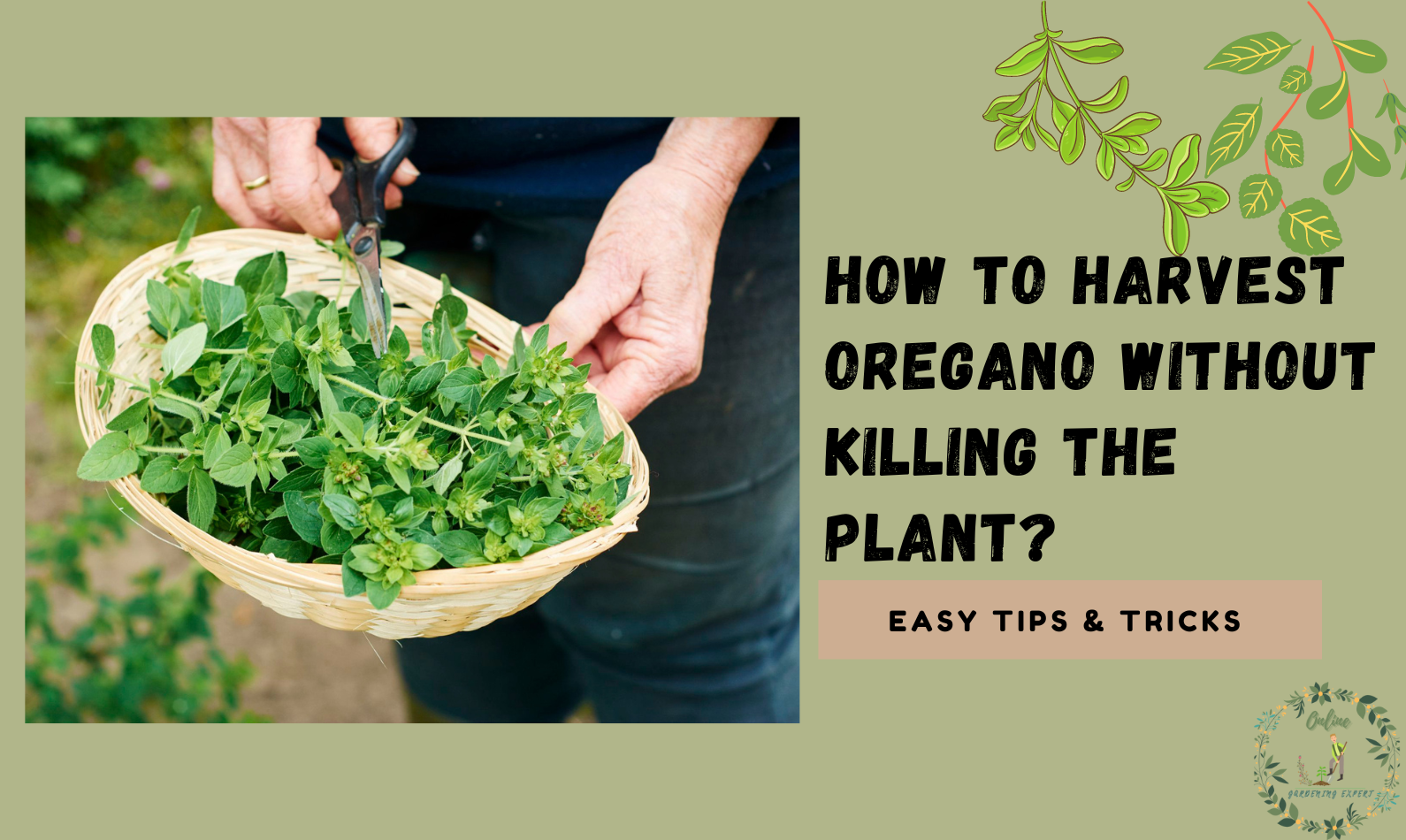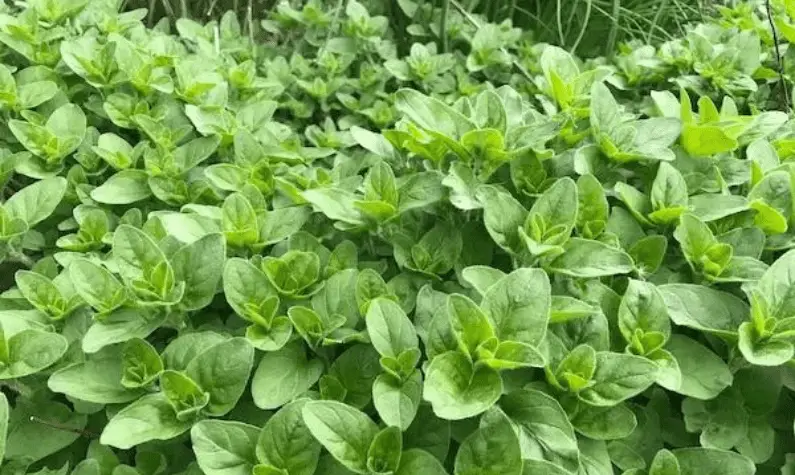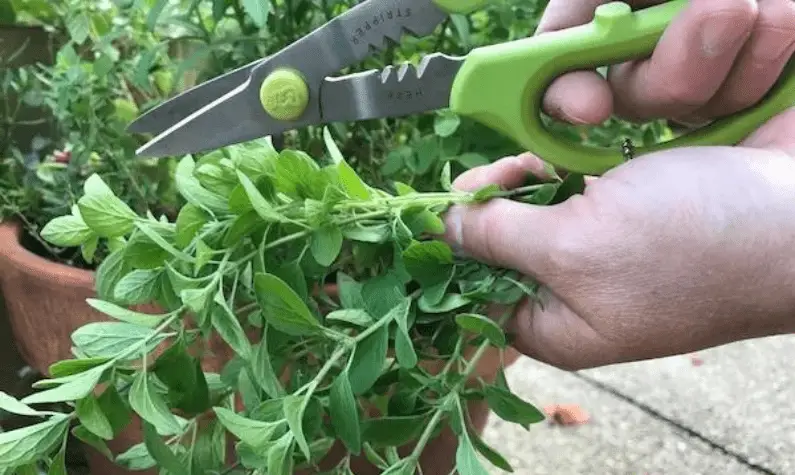How To Harvest Oregano Without Killing The Plant: Because oregano is a member of the mint family, it has a fragrant, earthy, and assertive flavor. Oregano is most typically used in recipes containing tomatoes and olive oil, such as pizza, spaghetti, and green salad, to enhance the flavor of these dishes. Take, for example, the idea of garnishing a newly baked pizza with some fresh, green, and crisp oregano leaves; it sounds delicious, doesn’t it?
Oregano is a medicinal herb that is widely used in various countries, particularly in Asia, to treat cough, serve as a natural antibiotic, lower cholesterol, and enhance gut health, among other things. Some people even boil oregano leaves and consume them instead of tea as an alternative. Oregano may offer cancer-fighting capabilities, according to several medical studies that have been conducted on the plant in depth.
One thing is to understand how to use oregano as a culinary ingredient or as a medicinal plant; however, another is to understand how to harvest it without destroying the entire plant. By following the helpful recommendations listed below, you can ensure that your first harvest is a successful and profitable one.
Contents
- Growing Conditions
- Conditions of the Weather
- Sun Exposure
- Requirements for the Soil
- Spacing
- Companion Planting
- Harvesting Period
- How To Harvest Oregano Without Killing The Plant? Oregano Harvesting Process
- Harvesting Tips
- Storing and Using
- A. Allow the oregano to dry.
- B. Dehydrate your meals in a dehydrator.
- C. Bake your oregano in the oven until fragrant.
- Conclusion: How To Harvest Oregano Without Killing The Plant
- What Are Parts Of Oregano Edible?
- Should I Let My Oregano Flower?
Growing Conditions
Oregano is a low-maintenance plant that can thrive year after year. It is also a good choice for containers. Interestingly, some oregano plants are over a decade old and have managed to withstand extreme heat and cold while remaining firmly planted in the ground.
Moreover, even those with limited garden areas can benefit from growing this herb because it thrives in-ground and container gardening environments. Whichever method you pick and which is most appropriate for your available resources, these are the oregano growing criteria that you must meet.
Conditions of the Weather
Considering that oregano thrives in warm conditions, growing this herb following the last frost of spring or when temperatures reach 45 degrees F or even higher is advised. On the other hand, your oregano plant may want additional protection, particularly during the winter months.
You may also choose to grow your oregano in a container and keep it indoors as long as the temperature remains between 65 and 70 degrees Fahrenheit during the growing season.
Sun Exposure
Depending on the variety of oregano you are growing, your plant may require anywhere from partial to full sun to thrive and flourish at its maximum potential.
The golden oregano, for example, will grow in partial sunshine; however, exposing it to full sunlight or excessive sunlight would cause its leaves to become scorched. Meanwhile, when exposed to direct sunlight throughout the day, the flavor of the majority of types is enhanced.
If you want to grow oregano indoors, you will need to plant it near windows or somewhere where it will receive a significant quantity of sunshine.
Requirements for the Soil
If you have light, well-drained soil with moderate fertility, you won’t need to use any fertilizer or organic compost because it will reduce the odds of the plant growing properly. According to the USDA, it can also withstand poor soil with a pH ranging from 6.5 to 7.0.
Oregano does not require frequent irrigation and can survive without it. According to the experts, it is preferable not to water your oregano until the soil is dry to the touch.
It is important not to overwater your oregano; instead, apply just enough water to wet the soil around the plants. This is also the precise reason you need loose and well-draining soil to grow vegetables.
If you’re growing your oregano in a container, make sure the container has sufficient drainage so that the plant doesn’t become soggy when you water it.
Spacing
Considering that oregano may grow to be up to 2 feet tall and span approximately 18 inches across, it is recommended to leave 8 to 10 inches between each oregano plant in a row.
Similarly, if you are growing your oregano in a container, choose one with a diameter of at least 12 inches so that your plant has plenty of room to develop.
Companion Planting
Oregano is great because it allows you to get the most out of your garden by incorporating it with other herbs, plants, and veggies because it is recognized as an excellent companion plant to practically everything.
The ability of oregano to repel insects is one of the advantages that other plants gain by being planted alongside it.
Harvesting Period
In order to determine whether the oregano is ready to be picked, measure the height of the plant.
When it comes to flavor, this herb is well-known for its potent, aromatic aroma; however, if you want a savorier harvest, you may wish to harvest it just before the buds open, as the leaves will most likely taste harsh once the flowers have begun to bloom.
Early am is also the greatest time to gather oregano because the dew has only just dried out, and the essential oils are more concentrated at this time.
How To Harvest Oregano Without Killing The Plant? Oregano Harvesting Process
Like harvesting any other herb, harvesting oregano promotes your plant to grow more aggressively and produce healthier and fresher leaves as a result of the harvest.
However, this does not imply that you can harvest at any time of the year. To harvest your oregano, you must wait until the plant is 4 inches tall before harvesting. Otherwise, the plant will not grow properly.
When your oregano is ready and mature enough to harvest, follow these procedures to ensure that your plant is not killed during the process.
- Cut back stems from the plant immediately above a growth node with a pair of scissors or garden shears to give the plant more room to expand. This will allow your plant to establish a new branch of stems from the snipped location, which will help it to generate additional leaves for future harvesting and reproduction.
- To avoid over-pruning, do not trim back more than 13 of the plant at a time. Harvesting more than the recommended amount will have the opposite effect of avoiding the death of your plant, as would harvesting less than the recommended amount.
- While it is possible to cut numerous stems simultaneously, especially if you require a large quantity of oregano, it is recommended that you cut one stem at a time to avoid hurting the new growth.
- When removing the stems from the plant, you could also utilize the basic approach of pinching, which is particularly useful if you only intend to harvest one or two stems of leaves. While harvesting, it will be beneficial if you grip the base of the stem to serve as a support and prevent more damage from occurring.
- Alternatively, if you only require a few oregano leaves, there is no need for you to trim the stems back to the ground. Instead, you can simply run your thumb and middle finger beneath the leaves you want to harvest and carefully peel them away from the stem with your other hand.
Harvesting Tips
When oregano flowers, it impacts the overall growth of the plant. As a result, you must deadhead the blooms as soon as they begin to fade to redirect the plant’s energy to creating more tasty leaves rather than spawning. It is possible to clip the flower slightly beneath the bloom or to pinch it off the stalk.
Oregano does not perform well in the colder months, but you may assist reduce the likelihood of it dying completely by ceasing all trimming and harvesting around two weeks before the predicted winter arrival date.
Getting ahead of the game, as winter draws to a close, you can begin preparing your oregano plant for spring development by removing any brown or dead leaves and stems from the plant.
Storing and Using
It is preferable to use dried oregano rather than fresh, in contrast to most other herbs. In this particular instance, there are three popular approaches that we would like to share with you. These are the ones to look out for:
A. Allow the oregano to dry.
- Take a medium-sized paper bag and poke a few holes (10-15) on each side. Set the bag aside.
- After thoroughly cleaning the freshly obtained oregano with running water, bundle 2-4 stalks together and place them in a paper bag with the stalks poking out the top.
- Tightly tie a knot around the stalks until the paper bag’s opening is completely closed and protected.
- The paper bag should be hung. The drying time for oregano should be between 2 and 6 weeks using this procedure.
B. Dehydrate your meals in a dehydrator.
- Remove the stalks from the fresh oregano leaves and arrange them flat on the dehydrator tray, leaving 1-2 cm of space between each piece of herb.
- Preheat the food dehydrator to 100 degrees Fahrenheit and reduce the moisture setting to the lowest feasible setting.
- You should have a nearly finished food dehydrator after 5-10 minutes of operation. The trays should be reinserted into the food dehydrator to restart the operation.
- It usually takes between 1-4 hours for the oregano to dry out on its own completely. Check your oregano plants regularly to avoid burning them.
- It will be completed after it is completed. Allow it to cool for around 20 minutes before crumbling it and storing it in an airtight jar until ready to use.
C. Bake your oregano in the oven until fragrant.
- To begin, preheat your oven to 170 degrees Fahrenheit.
- Prepare your baking pan by spreading the oregano flat on it, leaving about 1 inch between each leaf of oregano.
- The baking time will be an hour if you only use the leaves for decoration. However, if you are not removing the stems, it may take a little longer to complete.
- When finished, remove the oregano from the baking tray and set it aside to cool for 10-20 minutes before crumbling it and storing it in an airtight container.
- Dried oregano usually retains its potent flavor for around 1 to 3 years after being dried. It’s important to store them in an airtight container so that the flavor doesn’t disappear with time.
Conclusion: How To Harvest Oregano Without Killing The Plant
The time, frequency of harvesting, and preparation for the winter are all important factors in ensuring that you do not destroy the oregano plant when harvesting it. Once the plant has produced a rich crop of leaves, it is vital to protect it from the elements for the winter. We propose that you prune the plant back to around 2-3 inches in height, cover it with topsoil, and mulch it well. This aids in the survival of oregano during the winter frost.
Frequently Asked Questions (FAQ)
What Are Parts Of Oregano Edible?
If you are just becoming acquainted with this plant and have never collected them before, it is essential to understand which parts of the plant are edible and can be used in cooking. On the other hand, the majority of herbs are important in that all components can be used for a variety of reasons.
The oregano plant produces small, aromatic leaves with a strong flavor and a pungent fragrance. They can be eaten fresh or dried; however, the dried leaves have a more pungent flavor than the freshly picked ones.
Flowers are not left out in the cold either. Some gardeners allow the plant to blossom, and the flowers are utilized as garnishes in salads and as decorative elements in other dishes.
Oregano plants are typically characterized by rough, woody stems that are not edible. In contrast, if the stems are so tender that they snap when touched, they are usually mild enough to consume or to be used as a herb. Oregano is edible and beneficial in various applications depending on the goal.
Should I Let My Oregano Flower?
While oregano will blossom with gorgeous flowers to decorate your yard, you’d want to select between a plentiful harvest of valuable leaves or a beautiful display of flowers. As is the case with many herbs, they tend to be more flavorful and effective shortly before they flower instead of after.
The majority of herb farmers cultivate herb plants to harvest foliage. As a result, you don’t want to exchange it for anything. If this is the case, it will be appropriate always to harvest or cut them just before they blossom to avoid any problems.
It is also recommended to cut the oregano stems all the way down to the ground, especially for the flavor it provides. This will promote more stems to grow from the plant base, resulting in a fuller plant.



